Fernanda Nechio, research advisor at the Federal Reserve Bank of San Francisco, stated her views on the current economy and the outlook as of March 9, 2017.
- Real GDP grew at an annual pace of 1.9% in the fourth quarter of 2016, consistent with an ongoing moderate expansion. Going forward, we expect GDP growth to continue at a similar rate, between 1½% and 2% over the next couple of years.
- Recent employment gains remain solid. Nonfarm payroll employment in January rose by 227,000 jobs, partly due to a mild winter which boosted construction. Over the past six months, payroll gains have averaged around 190,000 jobs per month.
- The labor market remains near its sustainable, full employment level. January’s unemployment rate of 4.8% is close to 5%, our estimate of the natural rate of unemployment. If economic growth continues at its projected pace and monetary policy continues to normalize over the next 2 to 3 years, we expect unemployment to move gradually toward 5% over this period.
- Inflation has remained below the Federal Reserve’s 2% objective for several years, but has been gradually increasing towards the target rate since early 2016. Overall inflation in the twelve months through January, as measured by the price index for personal consumption expenditures was 1.9%, up from 1.6% in December, as energy prices accelerated. Core inflation, which excludes changes in food and energy prices, rose more gradually. The price index of core personal consumption expenditures was 1.7% higher than a year ago. Given the robust labor market conditions, we expect overall and core consumer price inflation to rise gradually to 2% over the next couple of years.
- Interest rates rose sharply in the weeks after the November 2016 election, but have stabilized in recent months. The Federal Reserve raised its Federal funds target rate by ¼ percentage point in December. Based on futures markets, financial market participants expect two or three more quarter-point increases in the target rate in 2017.
- U.S. trade policy is an important factor for our near-term outlook. New policies under consideration include the introduction of border adjustment taxes, changes to import tariffs, and renegotiations of existing trade agreements. These measures are intended to boost both U.S. exports and employment.
- Exports of goods and services help support jobs in the United States. According to the Department of Commerce’s International Trade Administration, exports accounted for an estimated 11.5 million jobs in 2015. The relative importance of the export sector, however, varies substantially across states, with jobs related to exports of goods ranging from about 10% of total employment in Washington and Texas to near 0% in Colorado and New Mexico.
- The share of jobs related to exports also varies across industries. As of 2014, jobs related to exports accounted for 26% of jobs in the manufacturing sector, but only about 8% in the service sector.
- Few goods or services can be classified as purely export- or import-related because of the role of global supply chains. For example, many domestically manufactured goods, such as airplanes, may be exported or sold domestically but also have an import content through their use of foreign-made materials and intermediate goods.
- Imports are also important for supporting jobs. For example, the apparel and computer equipment sectors rely heavily on imported goods, but generate domestic jobs in transportation, retail, advertising, and financial and insurance services. To add further complexity, many U.S. imports start their product lives as American intellectual property, which are then modified and produced abroad, before being imported back into the United States. As these goods move through their different stages of production, they add U.S. jobs all along the product cycle.
- The variation in the relative importance of imports and exports across states and industries poses a challenge in assessing the effects of trade policy changes on the overall U.S. economy. Possible changes in the value of the dollar and trade prices associated with these policy changes also complicate the outlook.
- Some sectors, such as manufacturing, have increasingly relied on technology to increase production, at the cost of reducing the number of employed workers. Trade policy changes are unlikely to affect the long-run trend of a declining number of jobs in this sector.
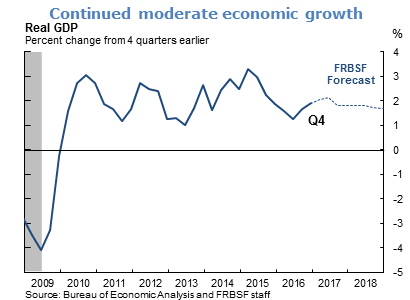
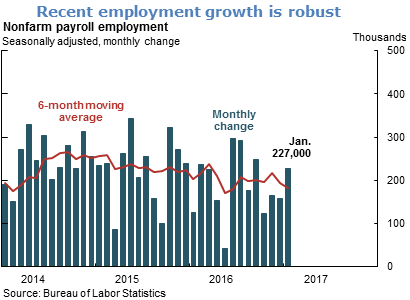
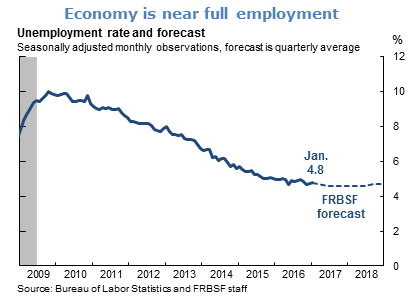
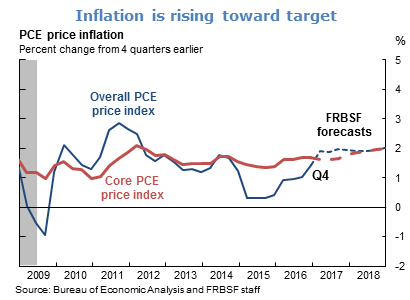
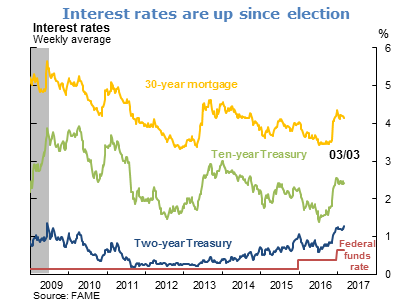
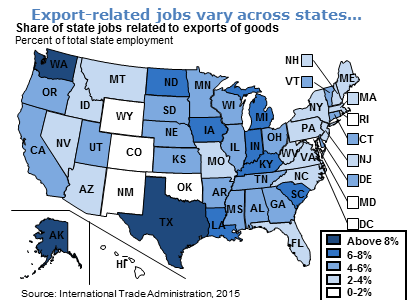
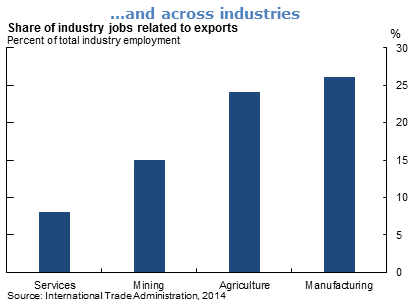
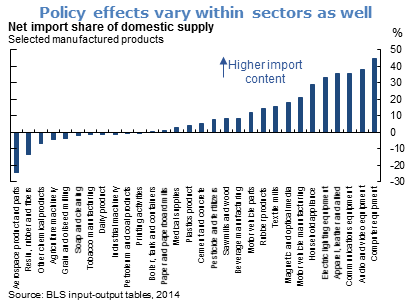
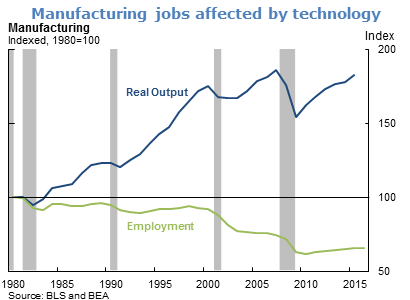
The views expressed are those of the author, with input from the forecasting staff of the Federal Reserve Bank of San Francisco. They are not intended to represent the views of others within the Bank or within the Federal Reserve System. FedViews appears eight times a year, generally around the middle of the month. Please send editorial comments to Research Library.
